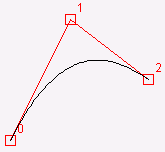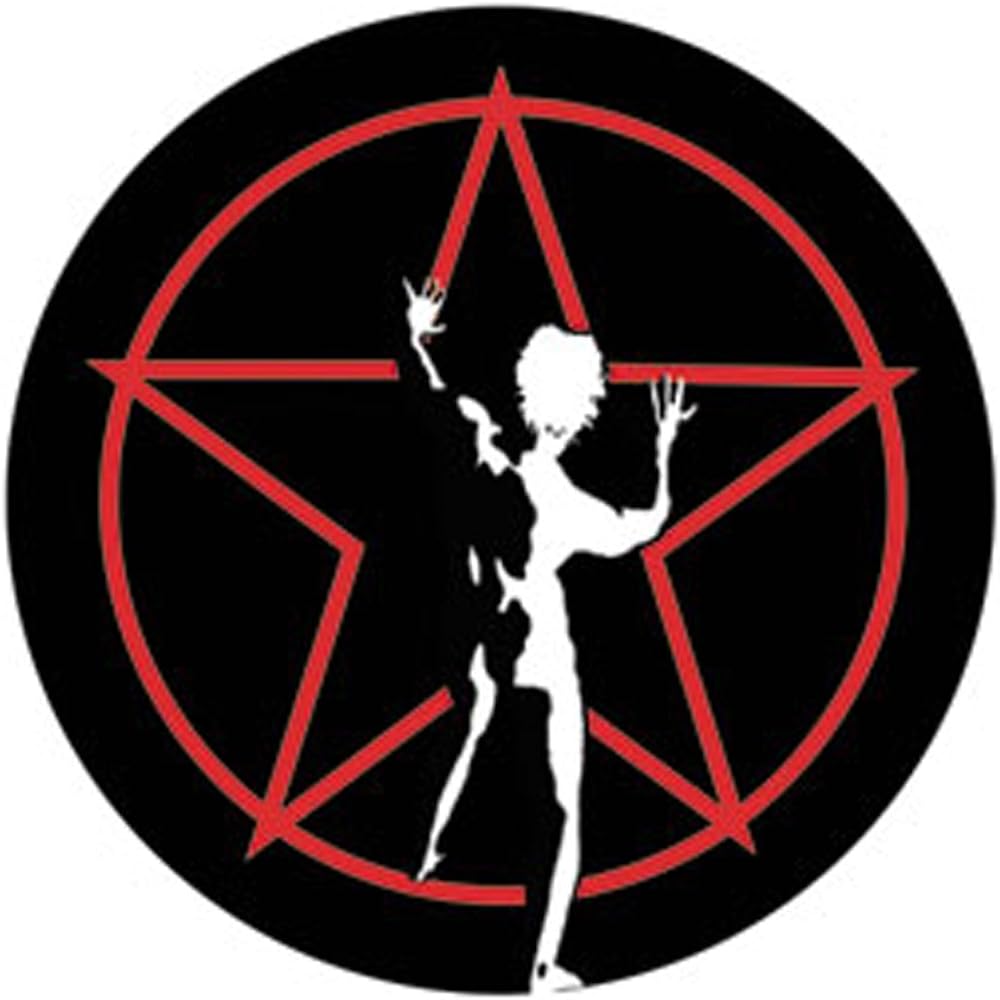Working for a global clinical research company, DD-Mmm-YYYY is the easiest for everyone to understand and be on the same page. It’s bad enough identifying which date you’re capturing in metadata without also trying to juggle multiple date formats.
You know, I used to think ISO 8601 was just a boring technical standard for writing dates. But now I see it’s clearly the first step in a grand master plan! First, they make us write the year first, then the month, then the day-suddenly, our beloved 17.05.2025 turns into 2025-05-17. My birthday now looks like a WiFi password, and my calendar feels like a math equation.
But it doesn’t stop there. Today it’s the date format, tomorrow we’ll all be reading from right to left, and before you know it, our keyboards will be rearranged so QWERTY is replaced with mysterious squiggles and dots. Imagine the panic:
“First they came for our dates, then they came for our keyboards!”
At this rate, I’ll be drinking mint tea instead of coffee, my local kebab shop will start offering lutefisk shawarma, and Siri will only answer to “Inshallah.” The right-wing tabloids will have a field day:
“Western Civilization in Peril: Our Months and Days Held Hostage!”
But let’s be honest-if the worst thing that happens is we finally all agree on how to write today’s date, maybe world peace isn’t so far off. Until then, I’ll be over here, clutching my calendar and practicing my right-to-left reading skills… just in case.
(Don’t worry,this was just a joke! No offense intended-unless you’re a die-hard fan of confusing date formats, in which case, may the ISO be ever in your favor!)
Peace!
deleted by creator
Where I live, “DD. MM. YYYY” is the standard but some old tombstones use

Do you know why one would ever do that? 20(02/05)25 feels like the “Don’t Dead Open Inside” of dates.
Which is exactly why they’re used on tombstones. See, the world makes sense after all!
That’s just a layout. Let’s not confuse presentation with content.
I’m not a computer and this isn’t work so I’m gonna just use my confusing date format.
5/1/2025. I’ll die on this hill.
m/d/y, so wrong by default
5/1/5 ?
Oh please. What’s next? A twelve hour time system with am and pm? Measuring distances in thumbs and other body parts?
To be fair, “thumb” was only a unit in determinating what stick we could beat our wives with.
Worse: measuring temperatures based on what one guy felt was the coldest it could get in the winter and the hottest his fever would reach.
Don’t be ridiculous, that’s just insane.
I’ll call the coroner.
Fifth January 2025?
I’ll see you in hell.
The 5th January 2025, correct.
Imagine a database, or even a folder with multiple years in it. “Payroll_05-01-2025”. Now all your files are sorted by month. You would have to scroll through “Payroll_05-08-1988”… etc forever before you reach 2025. And when you do, all of 2025 isn’t together. ISO 8601 solves these issues automatically. It’s time to adapt to a better system…
Rich is right, since this is the date format that sorts correctly in filenames.
Who’s Rich? Did you mean Randall?
…dammit, the only comics I read are XKCD and OOTS and I done fucked up.
How can you sleep on Oglaf
Banished to back in time to hang with Ozy and Millie
The good ones tend to filter their way out.
(I do also read whatever John Allison is currently working on.)
Won’t be true after 9999-12-31, however.
natural sort ftw
Can be solved with a small shellscript adding a leading zero to all filenames with the format.
Oh no! The Y10K bug!
Can’t wait for the Y40k bug, when Tyranids begin to infect our brains.
Bold of you to assume there isn’t already a genestealer cult on Terra. Washington specifically.
That…would explain a lot
I’d be curious to see a sorting algorithm that doesn’t handle YYYYY-MM-DD with YYYY-MM-DD properly. If you drop the dashes you still get a proper numeric order. If you sort by component, you still get the proper order. Maybe a string sort wouldn’t? Off the top of my head the languages I’m thinking either put longer strings later, giving us the proper order, or could put 1YYYY- ahead of 1YYY-M so maybe string sorting is the only one that’s out.
Lexical sorting (string sorting/alphabetical order sorting) is what I believe they were referring to when talking about file names.
The fact that you don’t have to do any parsing of the string at all, just do a straight character-by-character alphabetical sort, and they will be sorted by date, is a great benifit of this date scheme. That means in situations where no special parsing is set up (eg, in a File Explorer windows showing a folder sorted alphabetically) or where your string isn’t strictly date only (eg, a file name format such as ‘2025-05-02 - Project 3.pdf’) you can still have everything sorted by date just by sorting alphabetically.
Its this benifit that is lost when rolling over to 5-digit years.
I bet you could make a one liner to rename files with YYYY-MM-DD to 0YYYY-MM-DD fairly easily. Not a problem.
It’s an easy fix at least, just check if you’re comparing numbers on both sides and switch to a simple numerical sort.
I think Windows used to get this wrong, but it was fixed so long ago that I’m not even sure now.
If I, my software, or my data last this long, I will have nearly 8000 years to resolve it. Which is to say, the year 9998 is going to get busy.
If humanity survives until then, we can implement 9-digit dates and delay the problem until Y100K.
And it is easily extensible to YYYY-MM-DDThh:mm:ss to include the time of day
Are you an obsidian user?
I feel called out and I’m hiding in the bushes reading comments.
It’s called feeling seen and finding you’re not alone. Do you type "# " while screen sharing in work apps to no avail and the chagrin of colleagues? It’s okay. Me too.
Haha yep, you caught me. I’m a fan of the unique note feature
I’ve never met a fellow Templatr in the wild lol
My daily note broke and my life fell apart for a minute.
Have you also spent months building your Data Capture Workflow mermaid.js? 😅😬
Not quite months, but definitely weeks 😂 Obsidian can be such a rabbit hole. If I tweak that last template one more time, then I’ll finally be done, I swear!
Omg thank you!! Everyone sees my notes thinks I’m crazy for obsessing… It’s the correct fucking sort!
RFC-3336
I figured there were problems with existing calendars, so I created a new one to supersede all others. That reminds me, though: I need to declare the “official” format for the calendar, to avoid all this nonsense.
I see a window of opportunity, here. Normally, there’s no chance for any calendar revision to succeed in adoption; however, I think if I use the right words with the President, I could get it pushed into adoption by fiat. Y’all had best start learning my new calendar to get ahead of everyone else.
Note for the humorously disadvantaged: the Saturnalia Calendar is a mechanism through which I’m playing with a new (to me) programming language. I am under no disillusion that anyone else will see the obvious advantages and clear superiority of the Saturnalia Calendar, much less adopt it. And no comments from the peanut gallery about the name! What, did you expect me to actually spend time thinking of a catchy name when a perfectly good, mostly unused one already existed?
I’m partial to the IFC.
That’s where I started. I wanted a little project to try V on, and had come across the IFC, so I wrote a thing. While I was doing that, I got to thinking about the deficiencies and inherited complexities in IFC, and thought up Saturnalia.
If you pop up to my profile in Sourcehut, you’ll find a similar program - just a lot longer and more complex, for IFC.
I don’t know if they makes me a genius, but yes. Yes it does.
If it isn’t carved into a sheet of limestone using the Mayan character set, I don’t want to read about it.
I’m more into the FRC.
Hey, I quite like this! You’re the first person I’ve found that’s thought of fixing the calendar by adopting six-day weeks. I have a very similar personal version, with two main differences:
- there’s a leap week instead of a leap day, that way weekdays are always the same without having to skip any and every year has a whole number of weeks (either 61 most years [roughly 7 out of every 8] or 60 on short years [roughly 1 out of every 8])
- December includes this leap week and it’s either 30 or 36 days long, depending on the year. I put it at the end of December for the same logic that you put Saturnalia at the end of the year, to not mess with cardinal dates and so that the Xth day of the year is always the same date
I also came to the same conclusion about workweeks. With two-day weekends, the Gregorian calendar has 71 % of workdays but the new calendar only has 67 %. On a thirty-day month this means 20 workdays instead of 21,5
How does that work, with the leap week? Doesn’t the year drift out of alignment with the solar cycle?
Only in eight year chunks. By year seven there is more unalignment than there was in year one, but it goes back to normal on year eight. Same thing as with leap days, just a slightly bigger scale.
In fact, with current rules, [the shift in the regular Gregorian calendar becomes quite big when considering 100-year and 400-year cycles](File:Gregoriancalendarleap_solstice.svg). In theory, a leap week calendar with new and updated rules could have a very comparable if not a smaller average deviation from the true solar date, though I haven’t ran the precise calculations
Ok, so, first, let me say that while I’m enthusiastic about the concept, I understand it’s entirely theoretical. We can’t even get US civilians to adopt metric, FFS. Just a caveat, lest anyone wander by and overhear us.
That said, I did spend some cycles trying to see it it would be possibly to line up a lunar and solar calendar, and it’s not. And it isn’t nearly as important as it used to be. It would still have been nice.
So if you do run calculations, I’d like to see them.

Here they are! Orange represents my Leapweek calendar and blue is Gregorian. The Y-axis is deviation from the tropical year and the X-axis is the year number. It’s a 19200-year cycle to allow for both Gregorian and Leapweek to do entire iterations of their 400-year and 768-year cycles, respectively.
The Gregorian rules are, as you already know: if a year is divisible by 4, it is a leap year; unless it is divisible by 100, when it is a common year; unless it is also divisible by 400, in which case it is actually a leap year.
My Leapweek rules are: years divisible by 8, are leap (short, with 360 days instead of the usual 366) years, as are years divisible by 768 (after subtracting 4 so as not to clash with years divisible by 8). Just two rules as opposed to Gregorian’s three, but they result in almost perfect correction: it takes 625 000 years to fall out of sync by 1 day, as opposed to Gregorian’s 3 216 years for the same amount)
The catch is that Leapweek falls out of sync by up to 5½ days either way in between 768-year cycles, and up to 2½ days either way in between 8-year cycles. But they average out.
About the lunisolar I’m afraid to say that I ran into the same issue. Lunations are a very inconvenient duration to try and fit into neat solar days and months.
I wish it weren’t as theoretical, because I really like this calendar, but yea. It’s one of those things that will be impossible to change even though there’s arguably better options. It’s too arbitrary yet too essential and it goes in the same box as the metric second/minute/hour, the dozenal system and the Holocene calendar.
Here’s a challenge though: try and devise a Martian calendar! That one is not standardised yet. I had good fun trying to match the Martian sol and year to metric units of time and maybe giving some serious use to the kilosecond, megasecond and gigasecond
As an extra, here’s a 1000-year version of the graph at the start of the reply, with the current year 12 025 of the Holocene calendar :^) in the middle

This is fantastic. I’m going to have to spend more time with it.
Since we’re discussing timescales over which there’s a not insignificant chance something radical will happen to society, there’s also the fact that the day is getting longer by 2ms every hundred years. If you’re scheduling out 625,000 years, that’s 12-some seconds by the end, compounded - 6 extra seconds every day by the 312,000th year, etc.
Why does nobody mention the Discordian calendar? 5 days per week, 73 days per month, 5 months to a year (Chaos, Discord, Confusion, Bureaucracy and the Aftermath). On leap years, it adds one additional day (St. Tib’s day) with a name but no numerical date.
I’m a pope, but then, we’re all popes.
My problem with Discordianism is that it’s all 5s, when 6 is clearly superior, and 12 trumps them all.
Hail Eris.
10:13 PM on February 27th, but how do you write the year?
10:13 would be 2213 ?
I’m a fool
So, assuming you got the time wrong and meant you could confuse year and time of day, ISO also puts time after date.
2025-05-01T18:18:03Z
Which makes sense. Higher unit to lower unit.
10:13pm or 8:13pm? I can see how this is confusing… perhaps another cartoon with more guidance might be needed.
Personally I like date time groups: 272013 Feb 2013
I regularly work with Americans, Canadians, and Europeans. So many times each group defaults to their own format and mistakes occur I gave up on all the formats listed by OP. If i have to write a date in correspondence its like: Feb 27th 2013. No ambiguity. No one has ever challenged me on it either. It is universally understood.
I was introduced to ISO 8601 in the US military. Yay standardization!
Jokes on you, I can’t fucking rember which English month is which. April, May, July and Autum is just a grey mass to me.
Autumn is a season lol
I think you mean August.
September, October, November and December are easy to remember because they’re Roman numbers. 7-10 But two off because at some point they added July and August to honor Julius Augustus. So “month seven” is the 9th month.
Honestly I do remember some months, like starting and ending of the year. I don’t encounter English month names on a regular enough basis to remember their order and my month names in no way relate to English ones.
So anything after February and before August I have to google each time I encounter them.
It doesn’t help that we don’t even have month abbreviations like English does (Jan, Feb, etc.).
I prefer 27 Feb 2013, it’s how my work writes dates.
My biggest point of professional pride was the time my boss sent a mass group text to all his employees asking them to format dates the way I do
He didn’t say it was the format I used, so I didn’t speak up and say “it’s actually ISO-8601,” because I assume my coworkers who were used to writing things like “February 27 8:00-4:45” rather than “2013-02-27 8:00-4:45 (8:45)” may stab me
I prefer 27. Feb. 2013
That’s not very onionized of you
I prefer 13 Feb 27
You meant 27th Feb 2013, right? It is utterly moronic to have day in the middle irrespectively if you start with or finish on the year.
I assume it depends on geographical region, but I’ve never heard someone say out loud “27th of February, 2013.” It’s always “February 27th, 2013.” Writing it down like that could be easier to parse for people who are used to that format
Let me guess - you are a USian?
No, I’m American
I want to get ahead of this debate, and point out that a) “American” as a demonym for literally anyone in the western hemisphere is largely useless, b) the USA is the only country which includes “America” in its name, and c) USian is not more precise because there are two countries with United States in their name.
No, I’m American. It looks like you started writing this comment before I made the edit to mine, so I’ll go ahead and copy/paste it here
a) “American” as a demonym for literally anyone in the western hemisphere is largely useless, b) the USA is the only country which includes “America” in its name, and c) USian is not more precise because there are two countries with United States in their name.
So, you are a USian. I thought so. I never ever heard someone saying “February 27th 2018”, I think only USians do that. Everywhere else it is 27th of February 2018 which is logical.
You meant 27th Feb 2013, right?
Does it matter anymore with this format? You figured out the exact day, month, and year irrespective of the order.
Does it matter anymore
Possibly just the matter of logic.
It’s not about understanding. It’s about sorting,
Everybody understand both notations, but if you use it for filenames sorting is important. Natural sorting order is an important feature that should be considered.
day month year is just stupid in that regard. Not only does the of the month depend on the language, but also if sorted you get the first of every month grouped together.
Alt text:
ISO 8601 was published on 06/05/88 and most recently amended on 12/01/04.
Might be the best xkcd alt text of all time. I knew if from memory, and as soon as I saw the comic I thought “I bet someone quoted the alt text in the top comment”.
But… that’s not the right way. Are you saying the ISO8601 violates ISO8601?
The joke is that they’ve not been given in ISO8601 format, and also that they’re both ambiguous. For the second one, we can’t even tell which of the ends is the year.
Honestly Randall absolutely would put the year in the middle just to fuck with us
Publication 1988-06-05, latest amendment 2004-12-01.
I almost expected the two dates to use different formats, but no, they’re just both “the American way”.
Well you can only cram in so many jokes at once. Would have been funny though
Knowing Americans it’s probably the middle.
You found the joke
Is that the same guy who wrote Standards? tsk, tsk.
This format can fuck off. I prefer the unambiguous format 2FEB2013.
Checkmate, date snobs.
And yes, nations are free to use their appropriate abbreviations for the months.
Disregard ISO8601. Acquire RFC3339. You can leave off the T if you want to, or replace Z with
+00:00.with ISO 8601:
Sure, how about 2018-W06-1? Or 2018-036?
ISO 8601 contains way too many obscure formats. RFC 3339 is pretty much a subset and defines only sensible ones. It also allows 2018-02-05 08:02:43-00:00 (no T and explicitly specifying no timezone)
Acquiring the document (legally) to ensure compliance for ISO 8601 is relatively expensive for a single person (~$200 USD), while RFC 3339 is accessible for free.
Amen. Shout it from the rooftops!
Upset we didn’t get a “Half a score, two years, two months, and four days ago…”




















